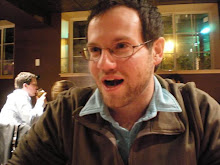If one is travelling, it is possible (and even desirable) to build a sukkah on the back of a camel (providing as explained before) that the camel doesn't make up one of the walls. REALLY??!?!?!?!?
Three people holding up Schak (organic material that makes up the roof of a sukkah) can make a sukka for a fourth person who sits underneath the schak. Somehow this doesn't make sense given the camel rules we just talked about but whatever, let's just move on. The problem with this sukkah is that on the first day of the festival (it lasts seven days) it is forbidden to build or unbuild the sukkah, so the three people would have to hold the schak for the entirety of the first day (first two days in the diaspora). Boy are my arms tired...
There are more rules, many many more rules. But even the ones that weren't quite as specific or far out as the camel laws weren't particularly pertinent to me, because, I don't have a place to build a sukkah. Oh well.
Jerusalem is now a city full of sukkot. Almost every building has at least one Sukkah in the front yard, on a porch, on a roof, etc. No elephant sukkot yet, but I'm hopeful. I don't have any pictures yet but will try to take some in the next few days.
Another part of the part of the holiday is waving of the Four Species: Lulav (Palm), Etrog (Citron), Hadass (Myrtle), Aravah (Willow). In a particularly beautiful (but bizarre) ceremony, the four species are waved around and marched around the synagogue. The four species are mentioned only rather cryptically in the Torah. Rabbinic tradition holds that they were part of the rites in the Temple, and that their inclusion in modern synagogue rites today is a reference to that tradition. Really, I think its a very old agricultural rite that became part of Judaism as it evolved. Later, when the Exodus narrative became so central to the Jewish religion, the celebration of the Festival of Booths was added to the existing agricultural rites. But I could be totally wrong. The lectures on the four species weren't any more accessible than the lectures on how to build a sukkah.
Overnight, a market sprang up in the religious neighborhood in Jerusalem. Going there to buy the four species was a cultural experience. I don't think I can describe it, I'll just show some pictures and we'll call it good.




No comments:
Post a Comment